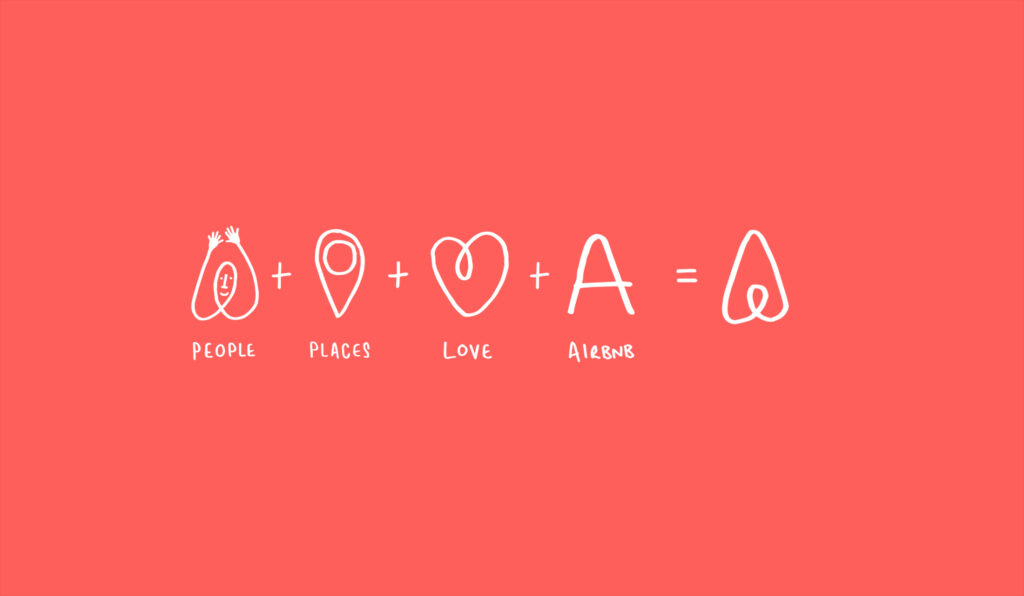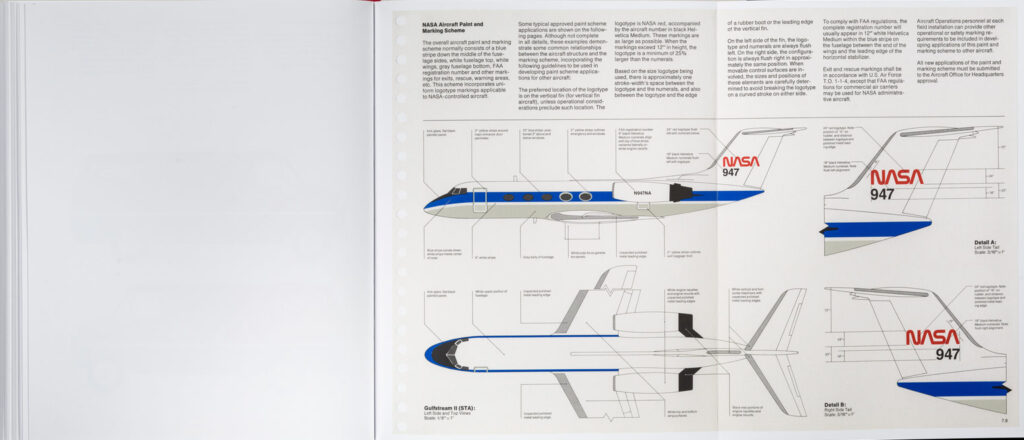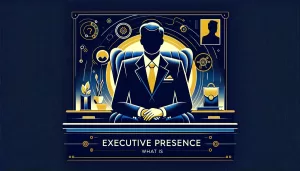A personal brand style guide must include at least three main sections: about me, writing and visuals.
These three categories involve most of the information that shape the look-and-feel of any brand.
In general, a style guide is a manual that defines the main elements of your brand, such as identity, logo, voice, writing rules, color palette, and many more aspects.
It helps you to better understand and communicate your own brand to your audience.
If you work with a team, a style guide will set the “ground rules” in which you will all work and be consistent on.
When applied to personal brand strategy, it’s pretty much the same, but that set of standards will answer to your own brand, your experience and the way you communicate on different platforms.
A personal brand style guide will help you define the applicable aspects of your brand and make it easier to produce new consistent content.
In this article you will find the main benefits of building a personal brand style guide and the most important elements you must take into account when working on yours.
Contents
Why Do You Need A Personal Brand Style Guide?
Since building a style guide for your personal brand it’s a lot of work, you may have at first some doubts about whether it’s 100% worth it or not.
The short answer is: yes, it is totally worth it.
However, there is also a more detailed answer:
- A personal brand style guide forces you to define your brand.
Creating the concept of a brand can feel abstract at some times, and a style guide will help you shape all those thoughts and put them in order.
- It encourages you to research your own brand.
At first, you might not have all the answers a style guide requires. This means that you will have to look for them in activities such as workshops, audience studies, stakeholders interviews, testimonials and many more.
At the same time, these activities will give you more insights about yourself and your brand than you expect.
- It facilitates teamwork in your personal brand strategy.
Sooner or later you will find yourself working with other people for your personal brand. These persons will help you in implementing your strategy and producing content for your different platforms.
A style guide will help them to clarify doubts and know how to create content that is always on-brand with you.
Benefits of Making A Personal Brand Style Guide
We just explained the reasons you need a style guide for your personal brand.
Now it’s time we share with you the benefits that will come to your life by building one.
- Keep your elements consistent. This mainly refers to tone, voice and visuals.
- Have a stronger brand identity across time and platforms.
- Have more room for creativity.
- Create better content.
“About Me” Section
For regular brands, this first section would be called “about us”.
Nevertheless, since we’re talking about your personal brand, it’s all about you!
This is the space for people to get to know you—but more than that, it’s the place in which you will communicate to your readers your essence.
If you are able to express that essence, the main concept behind your brand will be clear.
And just as any other kind of brand, there are four aspects that will significantly help you understand and communicate who you are: mission statement, vision, values and buyer persona.
Mission Statement For Personal Brands
A brand’s mission “clearly communicates a brand’s purpose, objectives and how it plans to serve its audience”.
It sums up why people should follow, engage and get in touch with you, as well as the difference you want to make in your audience.
Since your personal brand it’s not the same as a business brand, we also like to call your mission a “personal brand statement”—and we even have a free guide to help you build your own.
A personal brand statement will communicate who you are, what you do and how you can help others, and that’s precisely what our mission is.
Vision
Your brand’s vision it’s how you aim your brand to be in the future.
It’s the final intention and compromise you have with your work and your strategy.
It’s important you build your vision statement because it helps you stay focused and committed to your long-term goals.
In order to build a strong and viable vision statement, take into account these elements:
- Your industry.
- Your area of expertise.
- Your goals.
- The people you want to help.
- Your dreams.
- The ideas, goals and values that inspire you.
If you’re looking for an example for a personal brand vision statement, follow Jeremy Kossen’s advice:
“My vision is to become an internationally recognized leader in [my industry] who inspires others and is respected because I conduct myself with honesty, integrity, compassion and empathy. I am committed to cultivating my leadership skills by speaking, writing and mentoring others.”
Values
Your brand values are a “set of guiding principles that shape every aspect of your business”.
They align with your vision and mission statement, and complement the whole concept of your brand.
Establishing core values for your personal brand will help you have a better understanding of your own essence, the aspects you cherish the most, and how you can channel your efforts to transform them into results.
Just as every other aspect in the “About Me” section, brand values aren’t something that you choose only to add them to your style guide and never think about them ever again.
Your core values should be an important element in your decision-taking process, and be present in your daily routine as a thought leader.
There are several core values lists on the Internet that can help you get inspired and find out which ones you identify the most with.
We recommend you to choose a top three (with no order), and maybe add some additional ones if you feel like it.
Remember: don’t choosing a specific value as one of your top three does not mean that you don’t have it. It means that it isn’t a significant part of your essence.
For example: your core values can be authenticity, self-respect and honesty, but you can still be responsible, have leadership and be optimistic.
Buyer persona / audience
A buyer persona and an audience are two different things, but they both make an important part of the “About Me” section of your style guide.
“A buyer persona is a semi-fictional representation of your ideal customer based on market research and real data about your existing customers.”
On the other hand, “a target audience is the demographic of people most likely to be interested in a company’s product or service”.
Once you have clarified these two concepts, you will be much clearer on who you want your customers and followers to be and ideas will come on how to attract them.
Keep in mind that who you are selling to also reflects who you are, what you stand for and what you want to achieve short, medium and long term.
“Writing” Section
This might be a little self-explanatory, but the “Writing” section of your personal brand style guide will give guidelines on what and how to write content for your different platforms.
This involves copywriting for social media, but also how to write articles for your website, how to answer emails and even how you would write a book.
Since you will be building your personal brand style guide, you must start by thinking about the way you already write.
- Do you use short or long sentences?
- Do you use a lot of examples?
- Is your vocabulary easy to understand or do you use technical terms?
Formatting
The formatting section could be as short and precise or as long and complex as you want it to be.
However, it must include the basics of content readability:
- General writing structure.
- How to use punctuation.
- Your sentence’s length.
- How to use emojis.
- How to format bullets, quotes, and other resources.
Voice
Your personal brand voice is basically the way you express yourself. “It communicates values, mission, and vision through tone, vocabulary, imagery, and other elements”.
A brand voice it’s much more than just written content, but you can’t have branded written content without a voice.
By stating your voice in your personal brand style guide, you will know exactly how to guide your content and make it appealing to your audience, while it also sticks to your mission, vision and values.
A brand voice is composed of:
- Tone.
- Vocabulary.
- Imagery, font, colors.
- Audience.
- Medium.
And just as we explained before, the key to having a successful and engaging brand voice is to be authentic and true to your essence!
Extras
There are plenty of additional points you could go through in your “Writing” section for your personal brand style guide.
Some ideas are:
- Phrases or words to stay away from.
- Differences in writing between platforms and mediums (if any).
- Recommendations to prevent sexism when writing.
- How to use certain types of verbs.
- How to write figures and time.
Later on this same article you will find a list of examples of style guides that you could get inspiration from.
“Visuals” Section
The last general section we’re going through in this article will be your “Visuals” section for your personal brand style guide.
This includes everything about how you show your brand to the world, how it is designed and how to produce content that’s visually on brand.
Visual Identity
A basic visual identity includes logo, color palette, typography and imagery.
“Visual identity is all of the graphical information that expresses who a brand is and differentiates it from all the others”.
We recommend you hire a graphic designer to make all this work for you, since it will be one of the main cores of your personal brand and ideally you will be working with it for years—or even the rest of your life.
Each of the elements that are part of a visual identity allow your potential customers not only to identify your brand, but to feel emotions towards your brand and form a connection with it.
Formatting
Just as there are different types of formats when writing, there are also a few when designing visual resources for a personal brand.
In this section you must establish rules about how to use color, mix (or not mix) typographies, proper use of your logo, and address if there are any changes in design depending on the platform or medium.
For example, for your brand, it may be different designing for an Instagram post than it is to design for your website.
We recommend you (and/or your graphic designer) to create templates for the different kinds of posts you want to do.
This way, you’ll save future time and it will get progressively easier to make new content for your social media profiles.
Website Design
No matter your industry, your experience, your career or the specifics of your personal brand… you will need a website.
A website for your personal brand it’s insanely important because it holds all the relevant information about you and it’s the place in which you will finally turn your followers into clients.
This is why you must invest in good website design, and then take care of it by making guidelines and including them into your personal brand style guide.
These guidelines make a set of rules about the look-and-feel you want your website to have and how to achieve it.
Think about the color disposition in your website, your use of imagery, fonts and logo. Take care of the color and size of your text, and make sure everything it’s visually pleasing and easy to read.
Always make your customer’s comfort a priority and they will have a clear path to engage with your brand.
Photography
Photography can be included in the term “imagery”, but we believe it deserves its own section in this article.
For your imagery, you might use royalty-free pictures, use icons your graphic designer made for you, and so on.
However, when we talk about photography, we are referring to those that belong to you, whether because you appear in them, you took them, or they are part of a photography session you paid for.
It’s important to make guidelines for your photography because in the future, your photographers will need it.
- Do you prefer your pictures taken with lots of light or do you prefer darker ones with a little bit of mystery?
- Natural or artificial lightning?
- When is it okay to use plain backgrounds and when do you rather have dynamic ones?
- How edited do you want them to be?
These are a few examples of the aspects you must consider with this section of your personal brand style guide.
Style Guide Examples
The best way to get inspired to make your own personal brand style guide is to review what other people have done in the past.
In order to get ideas and have a better understanding of what a style guide should have you don’t necessarily have to see only what other personal brands have done.
Every type of brand can help you in this process!
Jamie Oliver
Jamie Oliver is an english cook, known for his mix between italian and oriental cuisine and his different TV shows, such as The Naked Chef, Jamie’s Kitchen, Jamie’s Great Italian Escape and many others.
His style guide includes his values and personality as a brand, tone of voice, logo, color palette, photography, packaging of his products, symbols, exceptions, product categories and many more!

At Latinpresarios, we are firm LinkedIn lovers!
And on the subject of style guides, they developed a page in which they explain their mission, vision and voice, but also their main graphic elements, the core of their designs and many other elements to get inspired from.

Airbnb
Airbnb changed the way we all travel around the world. It made it more accessible, and at the same time it allowed people to have a different source of income.
Their brand contains their three main elements in their identity: people, love and places.

Their style guide feels more like a story in which they describe their journey and their values, and that’s ultimately what you should aim for.
NASA
NASA thought about almost every detail when they released the first version of their style guide, in 1975.
It’s complex and long, but it goes through all the elements you could think about.
They even have explanations on how their spacecraft, telescopes and shuttles should be designed.

Start With Your Personal Brand Style Guide
We went along the most important elements any style guide should have:
- “About Me” section, with mission and vision statement, as well as values and buyer persona explanation.
- “Writing” section, including formatting, brand voice and additional elements.
- “Visuals” section, with visual identity, formatting, website design and photography.
A personal brand style guide is something that you will most likely build through time, since in order to have the final product you need to complete the branding process.
If you’re interested in knowing more about how to build your personal brand, you can apply for a free call with us.





